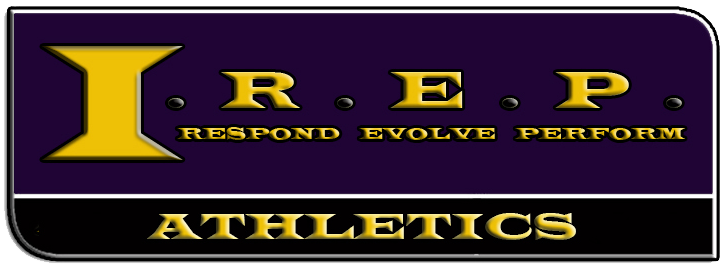Strength training fortifies your muscles, joints, and tendons, preparing them for the rigors of triathlon competition. It boosts power, improves efficiency, and, crucially, reduces the risk of injury. For a triathlete, fewer injuries mean more uninterrupted training days and a stronger performance on race day.
Integrating strength training into a packed triathlon training schedule might seem daunting, but it’s about finding balance. Aim for two to three strength sessions a week, focusing on exercises that enhance performance in the swim, bike, and run segments. On lighter training days, slot in strength work to ensure you’re not overloading your body with intense sessions back-to-back.
 Swim-Specific Exercises
Swim-Specific Exercises
Swimming requires considerable upper body strength, alongside a robust core, to facilitate seamless propulsion and buoyancy. Exercises targeting these areas are paramount. Incorporating pull-ups into your training regimen is highly recommended. This exercise strengthens the back, shoulders, and arms concurrently, closely simulating the muscular engagement required during the pull phase of the swim stroke. Regular engagement in this exercise augments endurance, enabling a swimmer to maintain form and speed over longer distances.
A strong core aids in maintaining an optimal body position in the water, thereby reducing drag and improving stroke efficiency. Exercises such as planks and Russian twists are effective here. Planks engender a fortified midsection, enhancing overall stability, while Russian twists, by focusing on the obliques and abdominals, support the rotational power needed for a vigorous and efficient swim stroke.
The inclusion of exercises that specifically target the latissimus dorsi, such as lat pulldowns, is worth noting. These muscles are integral to achieving a powerful pull in the water, a critical aspect of swimming that dictates the speed and effectiveness of each stroke. Strengthening these muscles ensures a swimmer can exert more power with each pull, translating to faster swimming times.
Bike-Specific Exercises
Leg strength is vital for cyclists. Squats stand out as a fundamental exercise. They target the quadriceps, hamstrings, and glutes – the primary drivers in pedaling. They contribute to more sustained power output over longer distances, which is important in triathlon cycling.
A stable core enables better bike control, and more efficient power transfer, and reduces the likelihood of fatigue on long rides. Planks are an excellent exercise for building this core strength. They target the deeper core muscles, contributing to improved posture and reduced strain on the lower back during cycling.
Cycling demands strong endurance in the muscles used for pedaling, making lunges an invaluable addition to a triathlete’s strength training regimen. Lunges work the legs in a manner that closely mimics the pedaling action, thus addressing both strength and endurance. They engage the quadriceps, hamstrings, and glutes, alongside the stabilizing muscles, enhancing a cyclist’s ability to maintain a powerful and effective pedal stroke.
Run-Specific Exercises
Central to superior running performance is the development of leg strength and stability. Exercises such as box jumps are integral in this context. Box jumps enhance explosive power, vital for the propulsion phase of running. This plyometric exercise improves neuromuscular coordination, which is necessary for maintaining pace and agility on varying terrains encountered in triathlon running courses.
Deadlift targets the posterior chain, including the glutes, hamstrings, and lower back muscles. A strong posterior chain is important for efficient running form, as it powers the forward motion and supports the spine and pelvis during the stride. Incorporating deadlifts into a training regimen can lead to significant improvements in running speed and endurance while lowering the risk of common running-related injuries.
The calf muscles are important in the push-off phase of running, and their endurance and strength are necessary for sustaining pace, especially in the latter stages of a race. Regularly performing calf raises can boost the muscular endurance of the calves, enabling a runner to maintain optimal stride length and reduce the energy cost of running.
 Combining Elements for Full-Body Workouts
Combining Elements for Full-Body Workouts
Burpees are a quintessential full-body workout that stands out for their versatility and comprehensive benefits. This dynamic exercise engages the arms, chest, core, glutes, and legs, closely mirroring the comprehensive physical engagement required in triathlons. Burpees offer cardiovascular benefits, enhancing endurance – an important component for triathlon success. Incorporating burpees into a triathlete’s routine benefits all three disciplines by building strength and stamina.
Kettlebell swings represent another effective full-body workout, primarily focusing on the posterior chain muscles necessary for power generation in biking and running. This exercise actively engages the core and shoulders, offering cross-disciplinary benefits, including improved posture and power transfer in swimming. The dynamic nature of kettlebell swings elevates heart rate, contributing to cardiovascular endurance, which is invaluable across all triathlon segments.
Mountain climbers target the core, upper body, and leg muscles while simulating the cardiovascular intensity of triathlon competitions. The engagement of the core and shoulders during mountain climbers parallels the muscular demands of swimming, whereas the leg action closely relates to the running discipline. Incorporating mountain climbers can significantly enhance a triathlete’s core stability, upper body strength, and cardiovascular endurance.
Tips for Effective Strength Training
The prioritizing quality over quantity principle emphasizes the importance of performing each exercise with impeccable form and technique rather than focusing on lifting heavier weights or completing more repetitions. Proper form ensures that the targeted muscle groups are engaged correctly, reducing the risk of injuries and the efficacy of the workout. It is beneficial for athletes to seek guidance from training professionals to refine their technique and ensure that each movement is executed with precision.
Regular and dedicated sessions contribute significantly to gradual and sustainable progress. Triathletes should integrate strength training their weekly routines, aiming for two to three sessions per week. This consistent approach allows for the development of strength and endurance while providing ample time for recovery and other discipline-specific training activities. It is important maintain this routine over extended periods to realize the full benefits of strength training on triathlon performance.
Triathletes come with varying backgrounds, strengths, and areas that require improvement. Some may excel in running but need to build more power for cycling, while others might seek to enhance their upper body strength for swimming. Tailoring the strength training program to focus on these specific areas can lead to more meaningful performance gains in triathlon events. Athletes should assess their performance regularly and adjust their training accordingly to address emerging needs or weaknesses.
Training intensity, both in strength workouts and discipline-specific sessions, should be modulated to prevent overtraining and allow the body sufficient time to recover. Incorporating adequate rest days, complemented by practices such as stretching, nutrition, and hydration, supports muscle repair and growth. This ensures that triathletes can sustain their training efforts and achieve continual progress.
